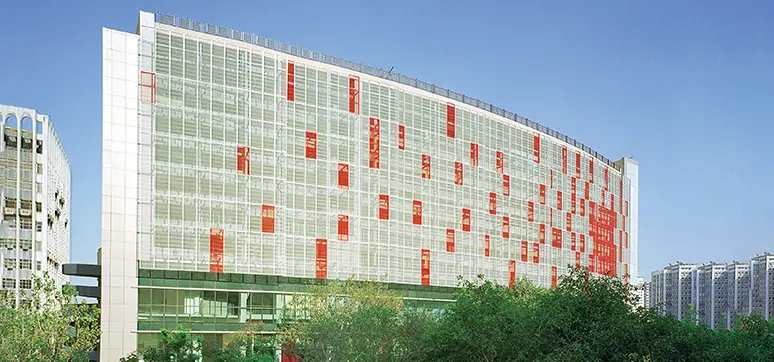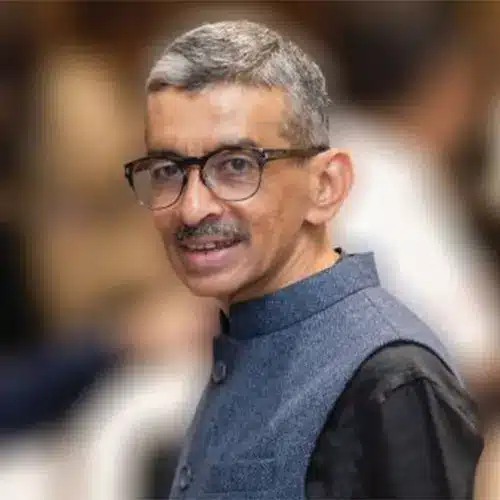Could you please tell us about your company and how did you enter the field of Architecture?
I’m an architect and I did my bachelor’s program at the School of Architecture (Centre for Environmental Planning and Technology, CEPT) in Ahmedabad. I am fortunate to have the opportunity to study under the masters like Ar. Anant Raje and Ar. B. V. Doshi. This was in the late seventies and the early eighties. After completing my Bachelor’s degree in Architecture in 1984, I worked in Mumbai for a couple of years with a firm called Architects Combine. It was a very prominent firm at that time under Ar. Kamu Iyer, who is no more. In 1986, I decided to go abroad to the United States to pursue my Masters in Urban Design, and completed it at Harvard University at the Graduate School of Design, Harvard (1986 to 88).
After working with a few renowned architectural firms for three years, in 1991 I came back to Mumbai and started my own practice Kapadia Associates. Now we’re about a little over 30 years old.
Started as a very small one-man practice, over the years, we have developed into a full-fledged architectural firm, doing a wide range of projects. Today, we are a medium to large-size firm in the city with over 130 people. We currently have offices in Mumbai and Pune.
Please tell us about the transition in architecture over the last 30 years.
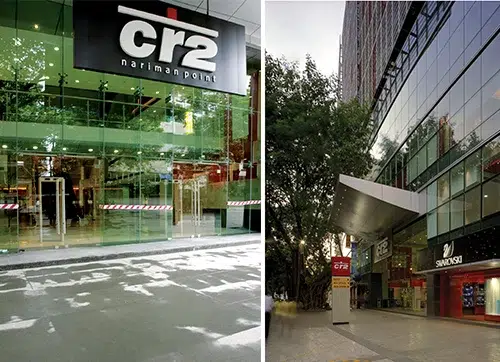
As a young architect in those days, that’s in the late 1980s, there were not many choices as far as careers were concerned, unlike today’s youngsters. The options were limited to commerce, science, engineering or medicine depending on one’s interest. I was more inclined towards engineering with a kind of creative bent. One of the few professions that you considered was architecture, therefore I decided to apply for graduation at the School of Architecture, Ahmedabad (CEPT) and got through. It became a very different story then onwards.
CEPT was a small but leading school then. Ahmedabad not only had a very strong pedigree of Louis Khan and Le Corbusier projects but also people like B. V. Doshi, who were responsible for setting up the school. Ar. Doshi was teaching very actively, and a lot of the younger faculty members had been working with him. So it was a kind of very inspirational environment. At CEPT, I got immersed in architecture… I ate, drank, and slept architecture literally. Those were the formative years where I learned the nuts and bolts of architecture, both design and technical aspects. I owe a lot to this step down the path actually to reach where I am today in terms of my background.
I still see the influence of Doshi and Louis Khan in your projects. Is it true?
Yeah. Influence of Doshi, of course. The CEPT campus itself is quite inspirational being designed by Doshi. And then in the neighbourhood, there are other buildings designed by Doshi and Louis Khan, and the IIM Ahmedabad campus is not very far away. At CEPT, one is surrounded by the masterpieces designed by these masterminds, learning happens not just from books. So these were the distinct formative experiences, very unique for me as an architect.
Could you please tell us about some of the turning points in your life?
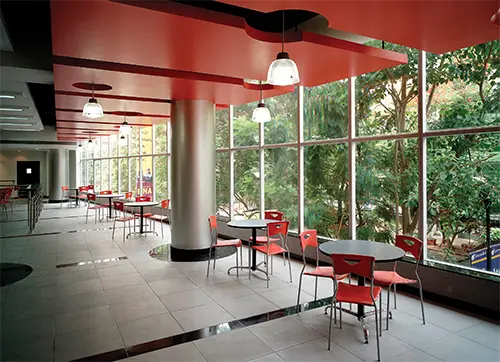
I came back to Mumbai from the United States in 1991 and started the practice. Like any other young practice, we didn’t have too many projects. We started with small projects like small residences for friends and families. Since there was enough time available in the initial years, I taught architecture in some schools like Kamla Raheja Vidyanidhi Institute of Architecture and Environmental Studies (KRVIA), Mumbai for a couple of years as a visiting faculty. Gradually we progressed and built several projects and our projects were published in different magazines. The size of the team increased.
The early 90s was also the time of the economic boom with reforms by then finance minister Mr. Manmohan Singh. The Indian economy opened up, and the projects became bigger and more complex. Foreign direct investment was allowed, a lot of foreign investment came in, and foreign companies came in as investors. As a result of Manmohan Singh’s trading policies, the economy of the country was booming, and all professions had to gear up to meet the demands. I was at the right time and at the right place. My practice gradually progressed. But one of the biggest breakthroughs for us was a public project. Earlier we were doing small projects like office building, residences, interior design, etc. We designed India’s first mall, Crossroads at Tardeo. It was an interesting task. It was a pharmaceutical factory, which was retrofitted into a mall. The client had appointed a very well-known architect from Singapore called DP Architects.
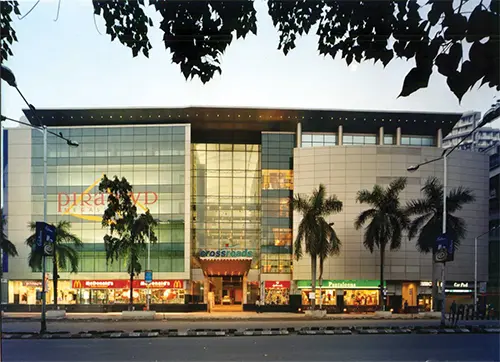
The owners, Piramal Pharmaceuticals wanted a local architect to help DP architects, and they didn’t want to go in for a very well-known established firm, but a young firm that they could work with, in order to avoid ego clashes. And we were a young firm. People felt that a young practitioner who had studied abroad would be the right kind to work with an established Singapore firm, and that’s how it started. The second exciting project was CR2 mall at Nariman Point in Mumbai, with the retail down below and parking up above, showcasing many such novel ideas. Both these big projects were for the same client. So these were our first experiences with large public projects.
New malls were coming into the country for the first time and were getting more opportunities. We had to grow the office because of these projects. Moreover, not many architects had experience in these kinds of projects. This is called the first mover advantage. This was our first big leap. The second big leap was in the residential sector, as more and more taller towers were opening up. We designed several large-scale residential projects.
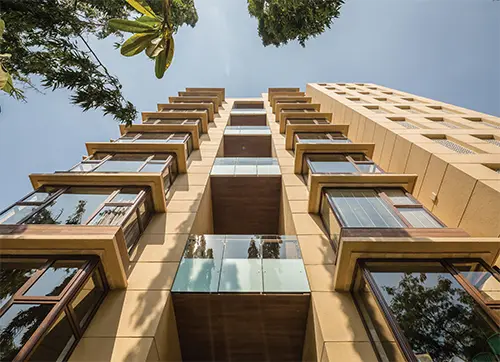
We got our next big break somewhere in the early 2000s when we were asked to design a campus for Hindustan Unilever (HUL) in Andheri, Mumbai. We designed the master plan for this large campus. It was on about 16 acres of land in Andheri, and their goal was to consolidate multiple small offices located in and around Mumbai. They had outgrown their main head office at Churchgate, and they wanted to move into one consolidated campus since they found it to be far more effective from a managerial perspective. Now it is a reality with the huge campus accommodating a training centre, a hotel of about 90 rooms, a recreational facility for the employees, etc.
By then our office truly became diverse with a large number of projects. We were doing malls, retail projects, large office buildings, etc. Other than Unilever campus, we did a Campus for Thermax in Pune. We also did some work in Bangalore. We did a large number of residential projects, like Ashok Towers.
What are the types of projects KAPL specializes in?
Honestly, we don’t have a speciality in terms of projects. Even today, after 30 long years, we like to do a diverse range of projects. We do a variety of projects, right from residential projects for Lodhas to very large master planning for Palava City, on a few 1000 acres, out of which only about 20 or 30 per cent has been built so far.
We continue to be involved in Palava project even today. So we are doing large-scale urban design at one end, and small residential and office buildings at the other end, and everything in between. The practice likes the change of scale. As we evolve, we don’t want to be doing the same type of projects. The profession has evolved over 30 years. Earlier at one point in time, if you had 25 or 30 people, you were looked at as a large office. And today, 25 or 30 would not be a large office.
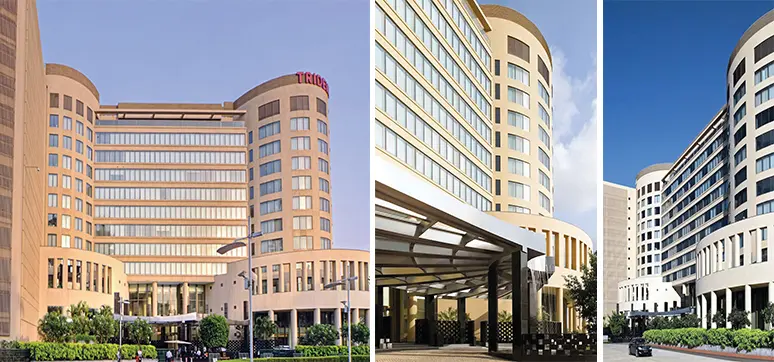
Projects have become much bigger and more complex. Today, a hundred-people office is not uncommon, but in the nineties when I started, a hundred-people office was very rare and highly creditable. There are lots of hundred-people architectural firms today. Earlier, developers were a kind of very small mom-and-pop shops. Today, many of them have become very large and some of them are publicly listed.
A few of our main clients including Lodha, and Godrej Properties, are publicly listed companies. So they have their due diligence, and large teams internally working with architects. So, we’ve also had to grow parallelly to meet their requirements. Mumbai city is growing, so are these large integrated developments.
Over some time, as more infrastructure comes in, people will enjoy a better quality of life in integrated townships like Palava City. Here I’m talking about the middle income and lower middle income strata. The township will cater to these strata by considering schools of different kinds, like an IB school at one end to an ICSE school, or an SSC school to CBSE school. The same for healthcare facilities too. We continue to work on such large-scale projects with diversity, along with small-scale projects. So I think this kind of diversity is what keeps us going.
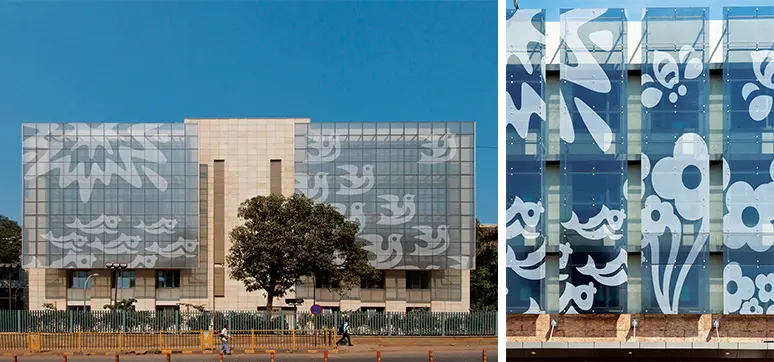
You studied in prestigious institutions which always focused on sustainable developments and sustainable practices. What is your take on sustainable architecture?
Yes, It’s an interesting question. Honestly speaking, sustainability relatively is a new buzzword in India, but, if you look at our traditional architecture, a lot of it was completely sustainable.
Today, sustainable construction has become a kind of a global topic of discussion. As we go for taller buildings, as we build more, carbon footprints become a critical issue. There is no choice, but to become sustainable. Like a lot of developers, other clients have taken calls to say that they will achieve carbon neutrality by a certain date. The Indian government is pushing it a lot. All architects need to practice sustainable design, not necessarily only in terms of rating systems, but in a much deeper sense through passive methods, cross ventilation, etc. Luckily, unlike the West, we don’t have to deal with the cold. So, all our buildings are naturally ventilated, but many are not looking at cross ventilation.
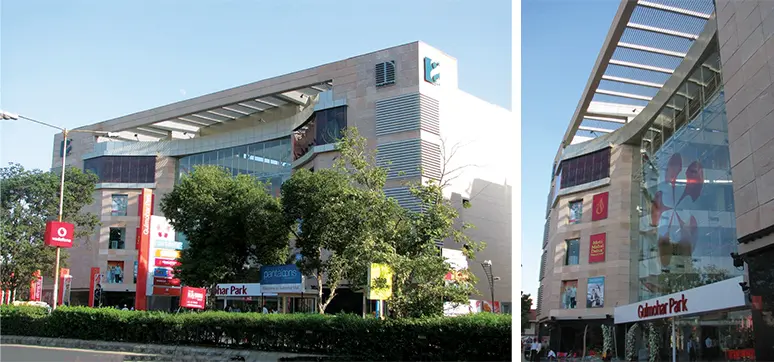
Our problem is the other way around. Instead of keeping the cold out, we have to keep the heat out. So, insulation, new materials, technology, low-carbon concrete, etc. matter. Today, in Europe, people are building sustainable buildings with no carbon input. Even skyscrapers are built with timber. But in India, timber is not a material of choice, unlike in Canada or in the US, where there’s ample timber. In India, we still build with concrete and steel, and companies are looking at low-carbon steel and concrete, and experimentation is going on exploring more sustainable materials. Incorporating sustainability is an effort. Sustainable architecture is not a luxury anymore, but a necessity.
In bulk of our residential projects, what happens today is that a developer completes a project, hands it over to the owner, or somebody who buys the flat, and then their association with the project ends. I think this approach is going to change, and the end-users are going to benefit more, like in office buildings. The buyers are more conscious, and keen to know about the developer’s sustainability goals by measuring performance indexes. We have different kinds of high-performance glass available in the market.
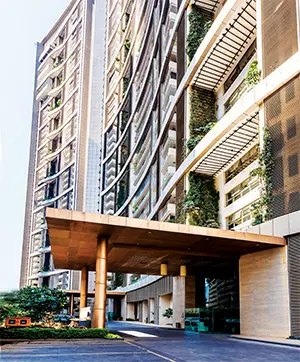
Most of the developments are happening in the commercial sector, i.e., in the office buildings. A lot of multinationals are coming in and they want to follow international standards whether their office is in Europe, America or India. They want to follow the same kind of standards right through in residential. In a project like in Palava, there’s a lot of effort that is going on in terms of not just looking at a building level but also looking at a city level. For example, solar power generation is not just from rooftops, we should be able to harvest solar power at the city level. We also need to look at water conservation, cross ventilation, better quality air, etc.
Certified energy-saving devices by BEE (Bureau of Energy Efficiency), help to save power. Similarly, a lot of innovative things are coming in the sustainability sector, not only in terms of architecture but even in terms of finances. Sustainable finance or green loans are extended to Environmental, Social, and Governance (ESG)- compliant development projects, including affordable housing. This also encourages architects to design more sustainable buildings. Everyone in the field is gearing up for the future and nobody wants to be left behind.
You have been seeing the development over so many years in India. Where is India positioned compared to the global organizations or developers or offices in achieving sustainability, even at the local level or even in tier 2 or 3 cities, where small builders have a major role to play?
Awareness plays a key role. If there is awareness of the benefits of green buildings, it’s not very difficult to do green projects even in tier-two cities. It might take some time to percolate. But I think that there is a greater demand from the end users, and the developers would be indebted to meet their client’s demands. The big developers are doing it because of funding/investments from foreigners who check on the sustainability index and sustainability goals. The government of India is pushing sustainability and performance, not only in buildings, but even in equipment used in a very big way. The government is pushing for sustainability because it is a signatory which leads India to be a carbon-neutral country by a certain date.
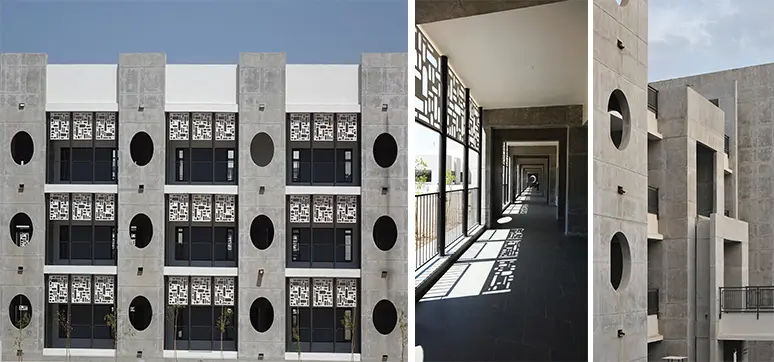
Our magazine is focused on façade and fenestration. What is your take on the sustainable façade?
I think as far as the office buildings are concerned, we need glass and glazing mainly to get light into the office interiors. And today, glass technology in India has developed quite significantly. There is no need to import a lot of the glass. Most of the big manufacturers of glass are already here producing high- performance glass. Shading devices are widely used on façades and fenestrations after analysing the sun’s path and other factors. The shading devices regulate heat and light ingress. In India, the problem is twofold. One is that we have ample natural light available throughout the day, which will cut down the use of electricity in terms of lighting.
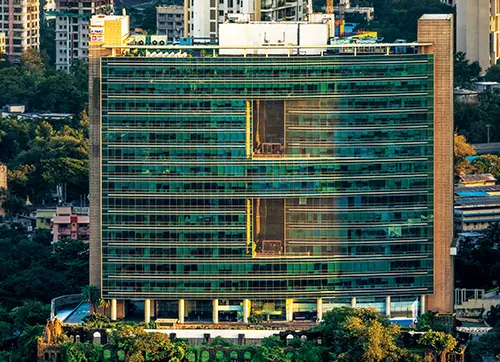
Secondly, we don’t have too many dark days and our daylight is long. So, to harness daylight, we need to look at innovative technologies like Light helves. We have long days, unlike the West. We don’t have a very pronounced winter in that sense where the days get shortened. Here are significant opportunities, and architects and façade engineers work with those opportunities, which is important.
Coming to residential buildings, I get a little bit perturbed when I see big glass façades without any shading devices. In India, we’re generally used to having openable windows or windows that allow air to come in. Now, the problem is fixed windows for very tall buildings. Having openable windows on the 40th floor is not the most practical thing to do either. So there are some innovative methods like vents fixed with the window mullions are options, which would allow the breeze and natural ventilation to come in. There is more scope for innovations, technologies and developments in these areas looking at geography, climate, weather, etc. At the moment, we’re importing and using products manufactured abroad. But I think the industry needs to develop local products.
Please tell us about the projects you do.
About 60 to 65 per cent of our projects would be residential. This, we break it up into two types. One is group housing, which is a large complex. Second is individual boutique residential buildings, which are like the ones in south Bombay – smaller luxurious housing projects. The balance of 35% is divided between commercial projects, institutional projects, etc. In the recent past, we have done a fair amount of commercial work including high-quality top-grade office buildings.
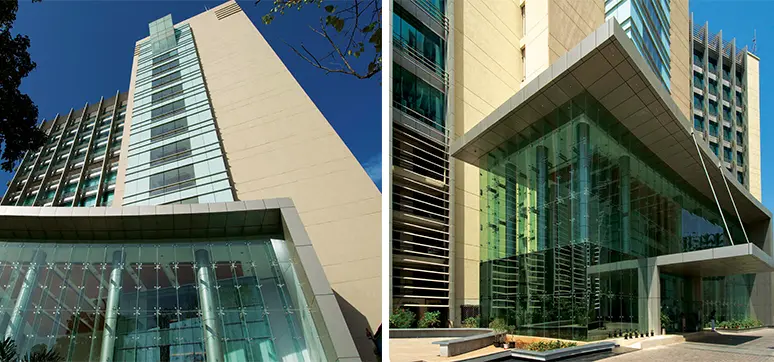
Could you please tell us about some of your most challenging projects as well as your favourite projects?
I can give you four or five different examples of projects that we loved working on. It’s just because these projects were challenging. The challenge could be because clients were more demanding or because the site was challenging in terms of conditions Vasant Vilas was an interesting project that we did, which is a small luxury residential building. It is a very small residential project that we’ve done in south Mumbai at Babulnath Road — A nice small 40,000 Sq ft single apartment building. We’ve used a lot of local stone on the façade.
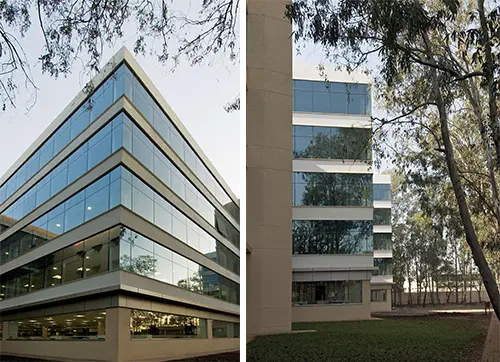
Vasant Vilas was an interesting project that we did, which is a small luxury residential building. It is a very small residential project that we’ve done in south Mumbai at Babulnath Road — A nice small 40,000 Sq ft single apartment building. We’ve used a lot of local stone on the façade.
And on the other end of the spectrum, was the Unilever campus, which is a large campus, not tall, because of height restrictions since it is close to the airport. It’s about five stories – ground and five. It is horizontally spread. This was a building for self-use for the client and they were very particular about innovations and sustainability. We not only received the Indian Green Building Council (IGBC) rating, but we also got high ratings from TERI, which is more stringent.
Another challenging project was one of the first few tall buildings that we did – Lodha Bellissimo, which is a 48-story building. It has an interesting curved form, because of which the façade design was a challenge. We were very careful about the proportion of the width of the building to its height – the ratio was very important. We needed certain shear walls, flanking walls, etc. It was a big learning experience as a large project.
A residential school for 1000 girls in Gandhi nagar near Ahmedabad for the BAPS community was another challenging and interesting project. It was a completely new kind of program and this project was very diverse and a different experience
My latest and one of the most favourite projects is Palava. This was our first- hand experience of working on a large city development. We have been at it for the last five to ten years. We’ve seen the city come up, grow, age. Things have changed over time. We started with one typology of housing. People’s expectations have become different. When we started the project, the price was about Rs 2,500 per Sq ft. Today, the price there is Rs 7,000/Sq ft. We continue to be associated with Palava.
We are working on a couple of other larger projects within the city, like redeveloping certain older parts of the city. Some of these lands belong to the government, being redeveloped by developers. A part of it was MAHDA colonies and the rest was part of future city developments.
We’re designing a new campus for a State government technological institute like an IIT to create job skills amongst the youth. Such universities are coming up in the states of Gujarat, Andhra Pradesh, Maharashtra, Madhya Pradesh, etc. In Maharashtra, it’s called MSSU, which is Maharashtra State Skill University. There will be the main campus and then smaller satellite campuses in various places across the state. This university will become a model, percolated with smaller kinds of buildings or smaller campuses across the state.
What is the most preferred material for you for building façades?
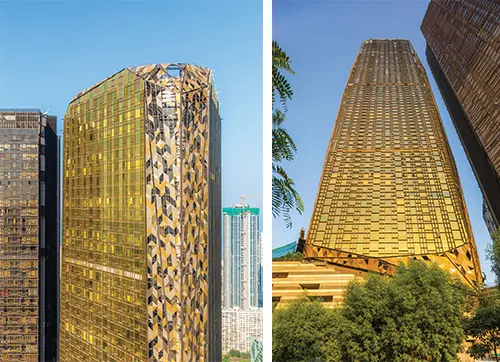
Depending on the scale of the project, the context, the site, the location, etc. we choose the façade material. We’ve experimented a lot with many products. We like to work a lot with stone, incorporating stone cladding and stone screens. It is an important element that we find in a lot of our projects, and I think climatically the stone screens are very useful. We’ve experimented with various materials. We’ve done screens in stone, GRC, and contemporary materials like aluminium, metal, etc., which are quite successful.
So I think screens are something that I’ve also found very effective in India because they can cut the glare out. Glare is one of our biggest challenges.
Since ancient times, screens have been used in India quite substantially as an architectural element. With 20 years of practice, we’ve learned to develop them in a more contemporary manner, with newer materials, etc. Operable screens, folding screens, automated screens, etc., are the latest innovations coming through. So I think screens are an element that we are particularly interested in.
Stone is a material that we like to work a lot with. We apply dry cladding and sometimes it’s composite. Otherwise, we use wet cladding. Glass is another material that we like to work with. In several projects, we have used glass.
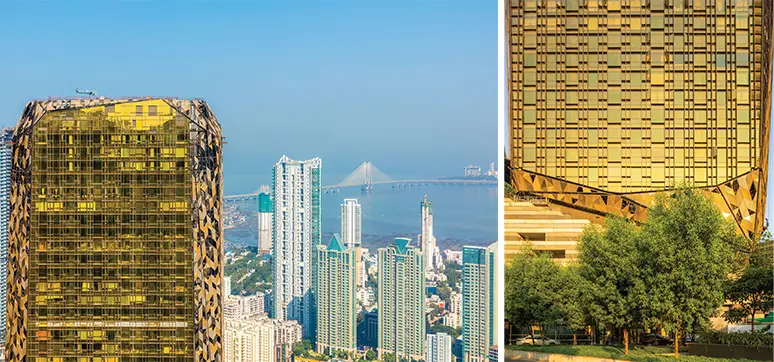
How do you manage convincing your clients with your ideas, while contractors are always in search of cheaper materials?
It’s difficult, but I think one has to work based on performance-based analysis. We have to ensure the long-term goal. Based on these analyses we need to convince the client. So it’s a battle and not an easy process. Sensibly using materials is important.
Looking at the future, 20 years from now, what kind of progress do you predict in façade technologies, materials, and construction?
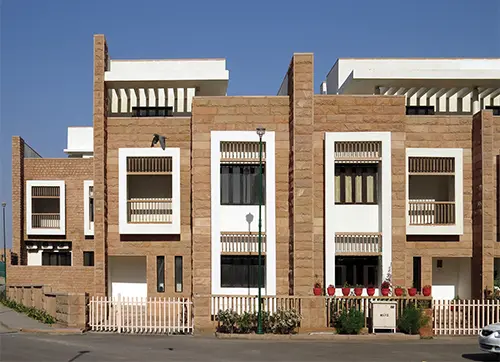
The things that I wish to see is, less use of glass and aluminium in the residential sector than in the commercial sector. Well, the commercial sector is developing in its way and may use more high-quality performance glass. They may become affordable by then.
My bigger concern is with the residential sector, where one has to look for more cost-effective and innovative solutions. So I think the façade & fenestration industry needs to up the ante in terms of their innovations, technologies, etc.
At the moment aluminium has a cottage industry kind of approach, where you buy the sections, cut and install it. I expect to see a lot more prefabrication coming in, which will ensure higher quality and performance.
We will see innovative sections, which will cut down the amount of aluminium used, also bringing costs within a certain level of control, with better ventilation. Standardization of doors and windows will happen in all types of fenestrations including sliding windows or casement windows, which are openable. When it comes to buildings, we have no choice but to go tall rather than horizontal, because of the tremendous pressure on land, hence the demand for pre-fabricated products will increase. Another point is that pre-fabs will increase the speed of construction. Use of prefabricated fenestration, manufactured in a factory, getting it to the site and installation are the kinds of things that we are yet to see in India, I hope to see more factory-built homes in the next 15 to 20 years.
Like cars made at a factory and shipped to you, façades can be built at assembling points to ship to the owners. There are elements like heat, light, acoustics, and corrosion, especially along the coast face very heavy rainfalls. A lot of R&D is required in this.
Now we have different ratings like IGBC, GBC, ECBC, Griha, etc. to decide on the quality of buildings and materials used. Do we have to insist on ratings? As an architect, how do you recommend that?
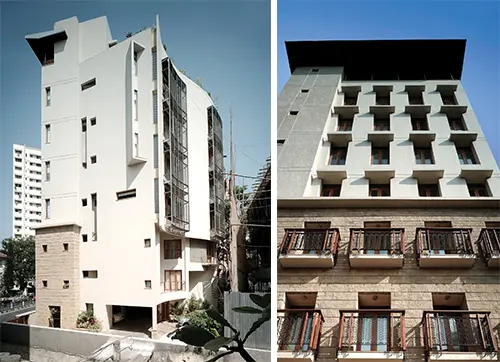
The client looks at it from the advantages that he gets with this kind of rating. If you do certain things, like a checklist of what needs to be done, then irrespective of what rating system you’re going for, you will adhere to that. We need not communicate and convince the client of this idea.
In terms of window wall ratios, we need to consider specifications on the type of windows needed for efficient ventilation, possibility of cross ventilation, allowance of ample natural light coming into spaces deep inside, etc. So, if you do a checklist allowing passive measures, it is good enough. Orientation of the building has nothing to do with ECBC, GRIHA or IGBC ratings. They don’t tell you how to do it. The bigger corporates, because of their corporate philosophy, are going in for these ratings in the residential sector, but a lot of the smaller guys don’t see any advantage of that. So they’re not even going in for that. They don’t have the bandwidth of ten people to document each and everything and then submit it to rating agencies/ institutions and they find the task to be a little tedious as they are small firms.
Sustainability is not just about getting some rating. It’s about following a set of principles. And that’s the philosophy that we try to employ. Sustainability is, incorporating a lot of passive measures looking at ventilation, shading, etc. If we address all these measures, I think your buildings will be sustainable to a great extent.
What is your advice to the young and upcoming architects?
When we started more than 30 years back, it was a little different because, there were not many institutions teaching architecture, or employment for architects. Now there are many more opportunities, with larger and diverse projects, advancements in technologies, an abundance of materials and complex designs.
As the opportunities are many, the competition is also tough. So it’s a two-sided coin. You will have to learn to work in a team, and teamwork becomes very, very critical. You can’t be a prima Madonna on your own today. We believe very strongly in teamwork where different experts are coming in. Expertise in a specific field is the key. Considering sustainability, some experts use specific software to do various calculations. We work with them and they get equal credit for it.
Today, I think the field of façade design has opened up a lot more as you know. Your magazine is about façade design, which has become a speciality. Façade engineering, for example, a lot of architects are involved in façade engineering. We work with façade consultants all the time.
Rather than being a jack of all trades, find out your interests and strengths, and based on your inclination, you have to develop a speciality that you think you can pursue and be passionate about. So younger architects must see opportunities in what interests them and pursue that with a passion. I think that’s the key to professional growth.
